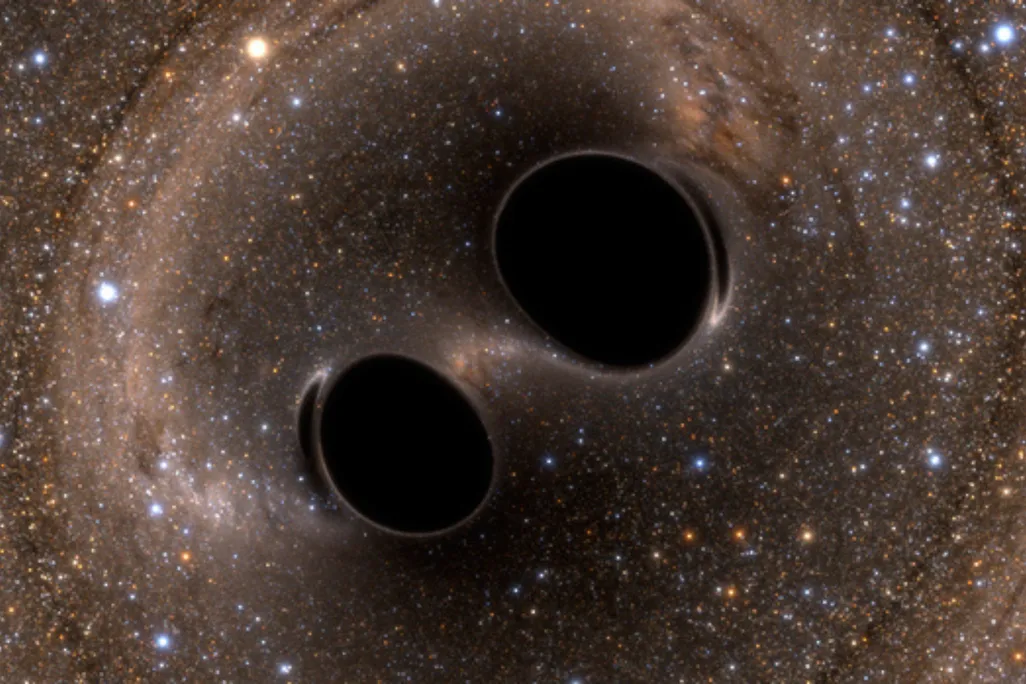Physicists Detect the Most Massive Black Hole Merger Ever Observed by Studying Gravitational Waves
A short-lived ripple in space-time revealed that two black holes merged into a giant black hole with the mass of 225 suns

In 2015, the Laser Interferometer Gravitational-wave Observatory (LIGO) directly detected gravitational waves, or ripples in space-time, for the first time ever—almost exactly one century after Einstein had predicted their existence in his general theory of relativity. The signal indicated that black holes had merged into a single black hole 62 times the mass of the sun. Since then, the LIGO team and other partners have observed hundreds of such events.
But now, one stands out from the rest—scientists say they’ve detected the most massive merger of black holes ever observed with gravitational waves. The special signal—dubbed GW231123—came as a very short, 0.1-second blip picked up at the same time by LIGO’s detectors in Washington and Louisiana on November 23, 2023. Analyzing that data revealed to researchers that two black holes, which were 103 times and 137 times the mass of the sun, merged into a black hole with a whopping 225 solar masses.
Need to know: What are gravitational waves?
Gravitational waves are ripples in space-time—often described as the “fabric” of the universe—that are generated when enormous objects, such as neutron stars and black holes, move quickly or crash together. They are invisible, but very sensitive detectors can find them.
Researchers from the LIGO-Virgo-KAGRA (LVK) Collaboration announced the discovery this week at the 24th International Conference on General Relativity and Gravitation and the 16th Edoardo Amaldi Conference on Gravitational Waves in Glasgow, Scotland. The research is detailed in a study posted to the preprint server arXiv last week, which means it has not yet been peer-reviewed.
“We detected the first gravitational wave ten years ago, and since then, we have already found more than 300 events. So it’s really an exciting [time],” Sophie Bini, a physicist at Caltech and a member of the LVK Collaboration, tells CBC News’ Nicole Mortillaro. “But this event in particular is very interesting, because it’s the most massive one.”
Before the new discovery, a signal detected in 2019 held first place for the most massive black hole merger, resulting in a black hole of around 142 solar masses.
“Ten years ago, we were surprised that black holes of 30 solar masses exist. Here are black holes of more than 100 solar masses, which is just spectacular,” Davide Gerosa, an astrophysicist at the University of Milano-Bicocca in Italy who did not participate in the research, tells New Scientist’s Karmela Padavic-Callaghan.
The record-breaking merger, however, isn’t just impressive for its mass but also for how quickly its black holes seem to have been spinning—their rate of rotation was barely within the limit predicted by Einstein’s theory of general relativity, as Charlie Hoy, a gravitational-wave astrophysicist from the University of Portsmouth in England and a member of the LVK Collaboration, says in a statement.
Another unusual thing stands out: The black holes fall into a little-known category known as intermediate-mass black holes. These structures, spanning between roughly 100 solar masses to hundreds of thousands of solar masses, seem to be rare. These new detections are challenging standard models of how black holes might form, since black holes of these masses wouldn’t be possible from the collapse of a star, per Live Science’s Ben Turner.
“We expect most black holes to form when stars die—if the star is massive enough, it collapses to a black hole,” Mark Hannam, a physicist at Cardiff University in Wales and a member of the LVK Collaboration, tells Live Science. “But for really massive stars, our theories say that the collapse is unstable, and most of the mass is blasted away in supernova explosions, and a black hole cannot form.”
/https://tf-cmsv2-smithsonianmag-media.s3.amazonaws.com/filer_public/76/4d/764da5f9-aaba-4e94-a9ec-3bfae63cad5f/ligo-hanford-livingston-1590x1170pixelsoriginal.jpg)
One possible explanation could be that the two original black holes were each the result of previous mergers—what’s known as a “hierarchical merger,” as reported by ArsTechnica’s Jennifer Ouellette. While researchers have previously identified hints of this type of event, this would be the “most extreme example” of this occurrence, Hannam tells the Guardian’s Ian Sample.
As researchers continue to refine their understanding of black hole formations, it remains to be seen what further secrets of the universe future gravitational wave signals—and our detectors—will reveal.
/https://tf-cmsv2-smithsonianmag-media.s3.amazonaws.com/accounts/headshot/Margherita_Bassi.png)


